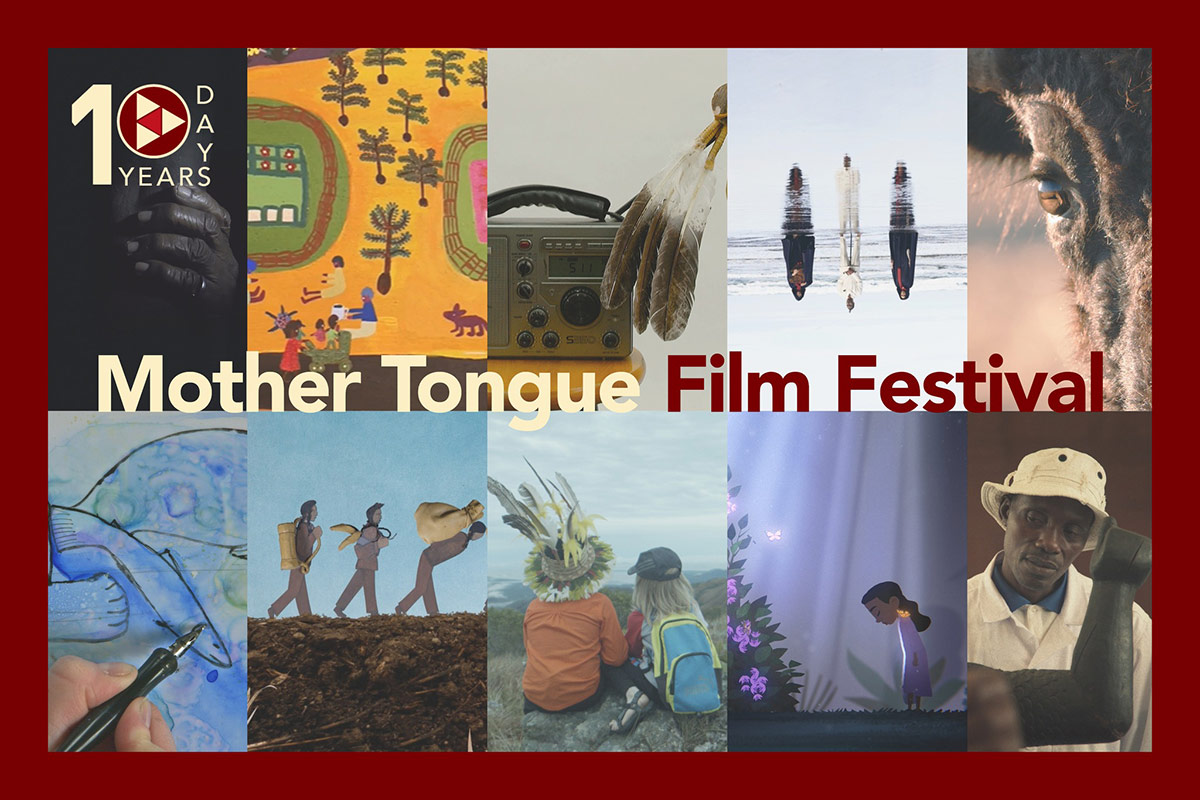The annual Mother Tongue Film Festival is celebrating its tenth year with ten days of programming: four days of in-person and six days of virtual screenings. From Thursday, February 20, to Sunday, February 23, at venues on or near the National Mall, it will offer twenty-three films in more than twenty-five languages from around the world. The digital portion of the festival will be held from Monday, February 24, to Saturday, March 1, showcasing films from previous years.
“Celebrating our mother tongues—the languages we learned in childhood—reminds us of our shared humanity,” said Joshua Bell, festival founder, and co-director and curator of globalization in the Anthropology Department at the Smithsonian’s National Museum of Natural History. “Through the unparalleled medium of film, the Mother Tongue Film Festival showcases the diversity of the world’s mother tongues and presents other ways of seeing, knowing and being in the world.”
Since its inception in 2016, the festival has showcased the work of over 300 directors and screened more than 300 films in languages from nearly every continent on the globe. To see the breadth of these works, a comprehensive story map of films presented by the festival over the years lists the films alphabetically and by continent, allowing viewers to scroll through and learn more about each film. For certain films, viewers can watch trailers or full films without leaving the map.
“Even before the United Nations declared an International Year of Indigenous Languages and then a Decade of Indigenous Languages, the festival had been presenting films from Indigenous communities and telling multifaceted stories about the importance of cultural and language revitalization,” said Amalia Córdova, festival co-director and museum curator of world cultures at the Smithsonian’s Center for Folklife and Cultural Heritage.
The annual festival will open the week of the United Nations’ International Mother Language Day (February 21) and will take place in the Smithsonian’s National Museum of Natural History, National Museum of the American Indian, Hirshhorn Museum and Sculpture Garden, and at NYU Washington, DC.
The Mother Tongue Film Festival is hosted by Recovering Voices, an initiative of the Smithsonian founded in response to the global crisis of cultural knowledge and language loss. Viewers can visit the Mother Tongue Film Festival website for the schedule and more information. All screenings are free and open to the public. Festival highlights include:
Opening Ceremony and Singing Back the Buffalo
Thursday, February 20, 7–9:30 p.m.
Smithsonian’s National Museum of the American Indian
Following opening remarks and a performance by The Zotigh Singers, award-winning Cree filmmaker Tasha Hubbard’s feature-length film Singing Back the Buffalo will be screened. It is an intimate story of reimagining North America through the lens of buffalo consciousness and a potent dream of what is within people’s grasp. There will be a Q&A after the film with director Tasha Hubbard, moderated by Cindy Benitez (National Museum of the American Indian).
Reflecting on Returns: Fifty Years of Engaging Communities through the Human Studies Film Archive
Friday, February 21, 1–3 p.m.
Smithsonian’s National Museum of Natural History
Over the past fifty years, the Human Studies Film Archive (HSFA) at the Smithsonian has become an unparalleled repository for film that documents cultural and linguistic diversity. A critical aspect of HSFA’s mission is to share these moving images with the world. Panelists Alice Apley, Barbara Johnson, Chris Moore, Cliff Saron, and Pam Wintle will share work highlights and aspects of this archival legacy with communities of origins: Ju/’hoansi in Namibia, Newar in Nepal and communities in the Cook Islands, El Salvador, and northwest Argentina. The panel will be moderated by Joshua Bell (National Museum of Natural History). Registration is required.
Gwledd (The Feast)
Friday, February 21, 7–9 p.m.
NYU Washington, DC
Gwledd (The Feast), a contemporary Welsh-language horror film, unfolds around a dinner party and the arrival of a young woman under mysterious circumstances. A virtual Q&A with director Lee Haven Jones will follow. Content advisory: This film contains strong graphic violence and is not suitable for individuals under eighteen. Registration is required.
Various Programs
Saturday, February 22, 12–8:15 p.m.
Smithsonian’s National Museum of Natural History
A full day of screenings will be presented in the museum’s Baird Auditorium, starting with the feature film Uproar, followed by two shorts programs, “Lives in Motion” and “Redemption and Duty,” and a program that meditates on communities and collections, closing with the award-winning film Dahomey.
Various Programs
Sunday, February 23, 11 a.m.–8:30 p.m.
Smithsonian’s Hirshhorn Museum and Sculpture Garden
A family-friendly shorts program, three feature-length films and an experimental audiovisual artwork will be screened in the museum’s Ring Auditorium.
Music: “Vanua Ralemana” by Sprigga Mek
Editing: Albert Tong, Center Peace Cinemas
This official 2025 trailer offers a dazzling glimpse of films that will be featured this year. Additionally, the festival’s new Asian Pacific American Initiatives Pool-supported retrospective reel highlights films by or about Asian Americans, Native Hawaiians, and Pacific Islanders that screened in the festival’s first decade.
Accessibility
Most of the films are fully open captioned or subtitled in English. American Sign Language interpretation will be provided for all introductory remarks, Q&As, and discussions. The closing night piece, WINHANGANHA, is not captioned; some film excerpts are subtitled in English and others have no sound or translation. All venues are wheelchair accessible. For questions about access services, email folklife@si.edu.
Partners
The festival has received support from Ferring Pharmaceuticals, The Elizabeth and Whitney MacMillan Endowment, the Americas Research Network, and Wick and Bonnie Moorman.
About Recovering Voices
Recovering Voices is an initiative of the Smithsonian founded in response to the global crisis of cultural knowledge and language loss. It works with communities and other institutions to address issues of Indigenous language and retaining breadth of knowledge. Recovering Voices is a collaboration between staff at the Smithsonian’s National Museum of Natural History, National Museum of the American Indian, Center for Folklife and Cultural Heritage, and Asian Pacific American Center.


